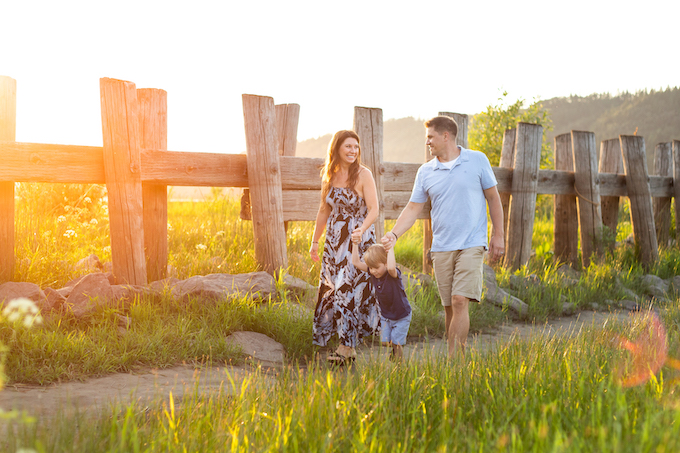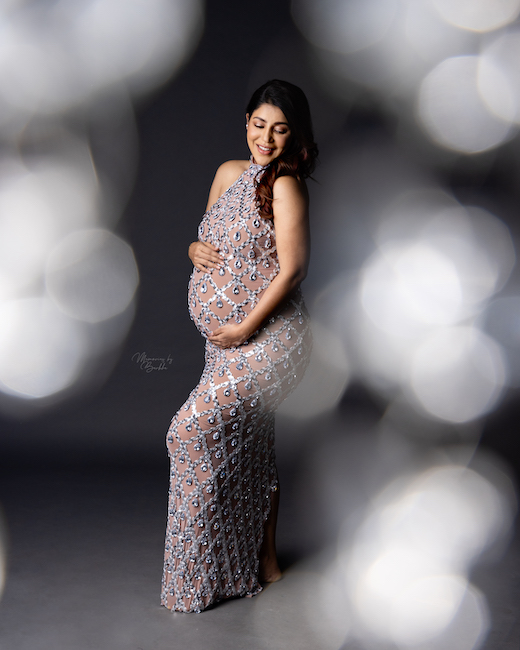Maternity + Family
Studio photography used to be the industry standard. If you wanted a family photo, you went into a photo studio and had a portrait made. That was how it was done—for years. But styles change, and after a while, it became much more common for a family to meet their photographer in a park or in their own home. Out with the studio; on-location photography was the new standard for family photographers.
Lately, however, with a percolation of reversing tides, I’ve been wondering if that is about to change.
When I started in the 1990s, the most popular style among family photographers was photojournalism, a move away from the traditional studio portrait. That then gave way to lifestyle, which has since remained the norm. In fact, I recently asked photographers in my social media circles to define their style, and the overwhelming response was “lifestyle.”
The appeal of lifestyle photography is clear. Capturing families as they are in their home or in a beautiful park feels authentic to many. It focuses on connection over perfection. And meeting clients on location saves money otherwise spent on studio rent.
However, many of the photographers I spoke to shared that despite their lifestyle approach to family photography, they were noticing a growing interest in studio work. The photographers themselves were drawn to the “classic” look of studio portraits, and more and more, their clients are asking for it.
Could it be that studio photography is making a comeback? That is certainly what I’ve observed in my business.
For the past 13 years, I’ve worked exclusively in a studio. I focus on classic studio portraiture with a modern twist.
Most of what I do is very traditional. I work with two backdrops: one white and one custom Oliphant that is blueish-grey. I use studio lighting in all of my work, and I shoot only on film.
The “modern twist” comes from my posing. While I do pose my clients, I tend to lean toward a less structured approach. My goal is to create images that have connection, emotion and spontaneity, but with the aesthetic of classic studio portraiture.
From a business perspective, shooting in a studio has allowed me to scale. The fact that clients come to me means that I can work with more families. Shooting in a studio also means that my work looks different and has helped me stand out in a saturated market.
Most importantly, my clients love it. The feedback that I get is overwhelmingly positive. They like the convenience of coming into a studio, especially on cold and rainy days, but most cite my “clean” and “timeless” look as their main reason for booking. I’ve found that there is a strong demand for this kind of work, and I know that I’m not alone.
Los Angeles photographer Caroline Tran is known for her soft, modern portraits, and she credits shooting in a studio with helping to achieve that look. She originally made the move into a studio to become more logistically efficient. “I can see more clients because they are coming to me,” Tran says. Last year, she was able to work with almost 100 families in one weekend by hosting mini sessions at her studio. “I would never have been able to work with that many clients if I’d been on location,” she notes.
Tran also believes that working in a studio has helped elevate her brand; having a space for her photography inspires her creativity, and she often builds sets for special events that she hosts. Her clients love coming into her space, she says, and over the past few years, Tran has seen more and more demand for this style of work.
“It’s definitely trending,” she asserts. “I’m seeing a fashion influence in family work. It’s very editorial, and it’s a great way for photographers to set themselves apart from the competition.”
Taura Horn, a newborn and family photographer from Lincoln, Nebraska, says that she is drawn to studio photography for the consistent convenience. The conditions, as she says, are “always perfect in my studio. I don’t have to worry about time of day or the weather.” She has also noticed that her clients have started to prefer coming into the studio. “I think they like that it’s less work for them,” and, she adds, “they also like the classic look of studio portraits and feel that the pictures will age well.”
Horn moved away from studio work some time ago, but then she came back to it again. She refers to her return as “a breakthrough” that came when she realized that she could work in a studio without having to do traditional posing—especially with newborns. “I’ve embraced my natural inclination towards classic portraiture but on my terms,” Horn says, “and I couldn’t be happier.”
Like many of the photographers I spoke with, Stefanie Russo, a wedding and portrait photographer based in Macomb, Michigan, is using less structured posing in her work to give it a fresher look. “I think most people think of 1990s family portraiture when they think ‘studio,’ so when they see modern studio photography, they are intrigued,” she says. “I pose to be unposed.”
Patrick Le has been a professional photographer since 2013, and he focuses primarily on weddings and lifestyle family photography. He’s not shy about admitting that his first love is documentary work, but he started offering more traditional photography in his Irvine, California, studio to meet the needs of his clients who were asking for it. “I think people want something classic,” he muses, “something that has longevity and will stand the test of time,” and for that he thinks “the studio makes way more sense.”
Le has similarly noticed an increased interest in studio photography from other professionals, and he sees the modern approach to classic portraiture as an up-and-coming trend. In terms of the trajectory of the industry’s aesthetics, he says, “people are just ready for something different.”
While studio photography has many benefits—a controlled environment, consistency, ease, and increase perceived value—there are some drawbacks as well. The big one is price. For many, having a studio means having monthly rent to pay. “I remember feeling like I was taking a big risk,” says Tran of moving into her first studio. “I knew it was the right move, but it still felt scary.”
I felt the same way when I moved into my first studio. There are ways, however, to make having a studio more affordable. Many people choose to create spaces in their home. I’ve seen spare bedrooms and even garages transformed into beautiful studios. Others choose to share a space. Splitting the monthly rent between two or three other photographers helps offset costs, and it’s fun to be surrounded by other creatives.
What I have learned from being in business for almost two decades is that everything old is, at some point, new again. That is certainly the case with studio portraiture. While I strongly believe in the beauty and relevance of lifestyle photography, I can’t help but be excited by the future potential of studio work.
I love being inspired by the vision and creativity of others and cannot wait to see where this trend takes us as an industry.
Sandra Coan is a Seattle-based newborn and family photographer specializing in studio portraiture and fine-art film photography. Her award-winning work has been featured in a variety of publications, and she shares her passion for photography and business as an educator as well.
Related: How to Build a Big Photography Business in a Small Town
Shaking Up the Traditional Family Portrait










